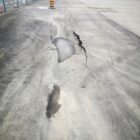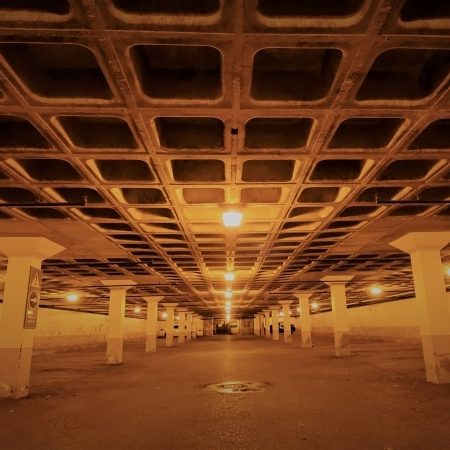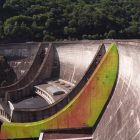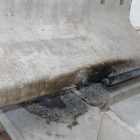In this article, we will review how non-destructive testing and evaluation methods can help structural engineers and construction managers with identifying the location and extent of anomalies in post-tensioning ducts. We will review how a multi-technology approach using Ground Penetrating Radar (GPR) , Ultrasonic Pulse Echo (UPE), and Impact-Echo (IE) can help identify soft grout, corrosion, and voids in post-tensioning ducts.
Anomalies in Post-Tensioning Ducts
Post-tensioning ducts are commonly used in reinforced concrete structures to accommodate high-strength steel tendons that provide additional strength and flexibility to the concrete elements. While post-tensioning systems are generally reliable, there can be certain anomalies or issues that may occur. Some of the most common anomalies in post-tensioning ducts include:
Duct Obstructions: Obstructions within the duct, such as construction debris, concrete grout, or rust particles, can impede the free movement of the tendons during tensioning or relaxation. These obstructions can affect the performance and durability of the post-tensioning system.
Duct Misalignment: Improper installation or shifting of the ducts during construction can cause misalignment. Misaligned ducts can result in tendon friction, excessive bending, or localized stress concentrations, potentially leading to reduced post-tensioning effectiveness or structural deficiencies.
Duct Grout Voids: Inadequate grouting of the ducts can result in voids or air pockets within the grout. These voids reduce the bond between the tendons and the concrete, affecting the load transfer capacity and potentially leading to tendon corrosion or loss of prestress.
Duct Grout Debonding: Improper bonding between the grout and the duct wall can occur due to poor workmanship or inadequate surface preparation. Debonding can lead to voids, reduced load transfer, and increased susceptibility to corrosion.
Duct Leakage: Improperly sealed or damaged ducts can allow water or other contaminants to enter, potentially leading to corrosion of the tendons. Leakage can also result in grout loss, reducing the post-tensioning system’s effectiveness.
How To Detect Anomalies in Post-Tensioning Ducts
3 Different NDT methods can be combined to evaluate the location and extent of voids under concrete slabs. In this section, we will review the applications of these NDT methods in detecting potential voids:
1- Ground Penetrating Radar – GPR
Ground Penetrating Radar (GPR) is a commonly used method to detect voids under concrete slabs. GPR provides a cost-effective means for rapid screening of the precise location and orientation of post-tensioning ducts. The test is generally fast, and requires minimal preparation.

2- Ultrasonic Pulse Echo Tomography
Ultrasonic Pulse Echo is a non-destructive testing (NDT) method for scanning sub-surface targets in concrete elements. UPE methods use acoustic stress waves to study the properties of sub-surface layers, and locate defects by identifying any anomaly of acoustical impedance that is different from concrete. UPE is valuable for assessing the condition of grouting in post-tensioning ducts, particularly for detecting voids, corrosion and soft grout in the ducts. It aids in determining the extent of damage, identifying potential weak points, and assisting in decision-making regarding maintenance or rehabilitation strategies.

3- Impact-Echo Method
The Impact-Echo method offers a rapid, cost-effective and non-destructive way for condition assessment of post-tensioning ducts. The test provides valuable information on the likelihood of damage and helps in the quality assurance of grout installation. Impat-Echo test method uses stress waves for evaluating the quality of grouting in post-tensioning ducts The results of impact-echo test can be cross referenced against the results of GPR and UPE scans to help engineers determine the location and extent of potential voids and corrosion in post-tensioning ducts.
4- Validation
To validate the findings and confirm the presence of voids in post-tensioning ducts, it’s recommended to conduct additional investigations on at least 5% of the test locations, such as coring or visual inspection using borescope video. These methods can help verify the results from the non-destructive testing and evaluation program.





